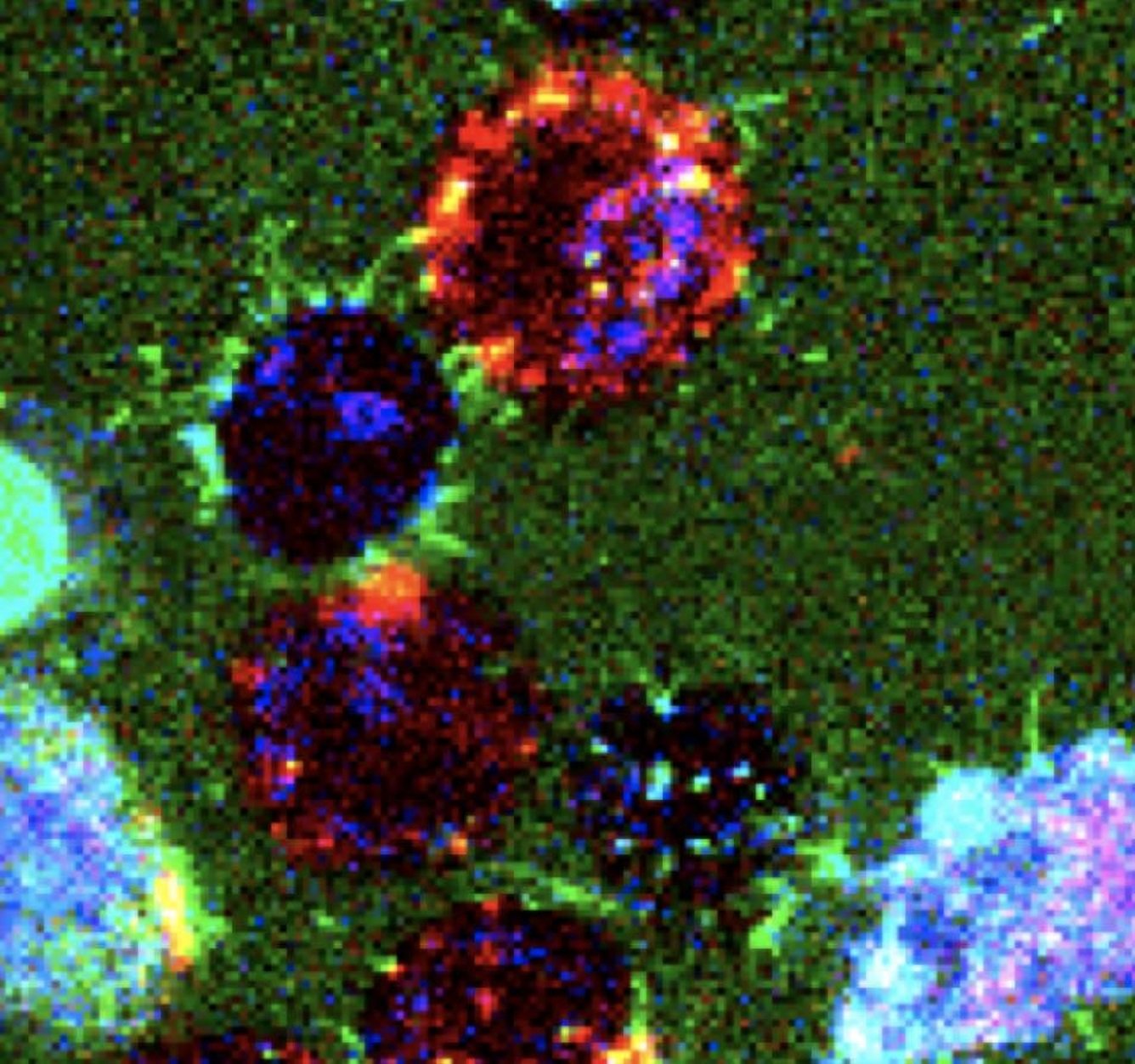Researchers at Johns Hopkins University in Baltimore are developing self-assembling and self-repairing microscopic pipes using nanotubes.
They are designed to be entirely leak-free, and potentially usable for delivering medicine to individual cells in the future. This may well lead to a breakthrough for the future of healthcare and medicine by making drugs way more effective and less prone to producing side effects.
The tine lines, seen here in light green are connecting tubes approximately 7 nanometres in diameter. The image is not extremely clear but, as you can imagine, it is hard to image these incredibly small structures - Image Credit: Johns Hopkins University
The Hopkins research team is laying the groundwork for the development of an actual nanotube network that could supply individual human cells with proteins and molecules of specialized medicine, allowing for much more effective treatments in the future.
According to co-author and biomolecular engineer Rebecca Schulman, the study shows that there is a good chance that the goal of leak-free, self-assembling nanotubes is achievable. She adds that the team was able to attach tubes to differing endpoints, making them usable for something akin to 'plumbing' which could prove to be another valuable feature.
Building unfathomably small tubes
The tubes that are currently being developed have a diameter of approximately 7 nanometers. It is hard to wrap your head around these types of measurements. However, in an attempt to provide at least some sort of perspective, the scientists estimated them to be about 2 million times smaller than an ant or the width of a single particle of dust.
The approach to building these things is based on a well-known strategy that uses DNA fragments as building blocks to grow and mend tubes and give them the ability to seek out and link to structures.
Similar structures have been created in earlier experiments to create smaller structures known as nanopores. The focus of those designs is on DNA nanopores' capacity to regulate the transport of molecules through laboratory-grown lipid membranes that resemble cell membranes.
If we compare nanotubes to pipes, then the nanopores can be compared to short pipe fittings that are not able reach other tanks, tubes, or equipment on their own.
DNA strands are weaved between various double helices to produce the nanotubes. The small openings in their architecture resemble Chinese finger traps. Scientists had not been able to verify if the tubes can carry molecules over greater distances without leaking or whether molecules could squeeze through their wall gaps, due to their incredibly small size.
The researchers did demonstrate how the tubes carried molecules into tiny, lab-grown sacks simulating a cell's membrane by accurately monitoring the geometry of the tubes, how their proteins linked to certain nanopores, and how quickly the fluorescent solution flowed. The luminescent molecules flowed by like water down a slide.
Future research
Researchers may be able to learn more about how neurons communicate and interact by using DNA nanotubes. They might also be used to examine the functioning of the body's more than 200 different cell types as well as disorders like cancer.
As a follow-up, the researchers will conduct research projects with real cells as well as synthetic ones, in addition to experimenting with different types of molecules.
If you are interested in more details about the research, be sure to check out the paper published in the peer-reviewed science journal science advances. As always, we have a link to it below the article.
Sources and further reading:
If you enjoy our selection of content consider subscribing to our newsletter (Universal-Sci Weekly)
FEATURED ARTICLES:







